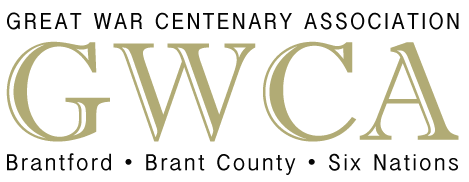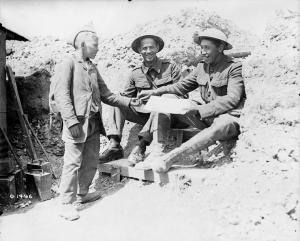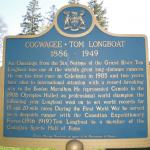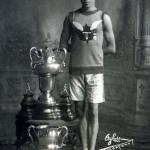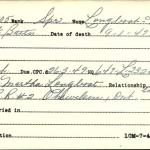BX October 30, 1917
Use Mohawk for Despatches to Fool Huns – Tommy Longboat has a Scheme to Keep Military Secrets
More proof that Tom Longboat is still in the land of the living, despite the report that he had been killed on October 2, is furnished in a letter received from him by Captain Tom Flanagan. It is dated October 5, and begins:
“No doubt you will be surprised to hear from the real, original, mysterious Longboat. Now I want you to do me a favor, if you please. Forward this letter to the Canadian government. It’s up to him if he adopts this letter or not. It’s for the whole Dominion of Canada’s benefit, but also the people at home, as I like to suggest something very useful for the present war as earnest as possible.”
He then goes on in his old way of expressing his thoughts, to intimate that, in order that the Germans be unable to understand army messages, they be transmitted in the Indian language. He adds:
You may think this is because I wanted an easier job. I don’t want the job, and another thing, there is nobody else than can talk my language. I am all alone, but I know the Mohawk people can do it. They have education, and I have none. I only have the brains. I only self-made man.
He then refers to the fake Tom Longboat who masqueraded in the United States some time ago, and says:
He got chased out over Los Angeles last winter and was over to Mexican border. Now he is in U.S. army. Now made me come to my mind over this fellow last night. I was over to front lines and I was sweating like an old horse. I was covered with mud from head to feet, and I don’t know how many times I fell in the shell holes over the wires. They cut me all up. Everything was flying around, high explosives, shrapnel, whiz bangs, coal boxes, rum jars, oil drums. That made me real sore on this fellow having good time all over country on my reputation, so I am going to put all action against that man. I am going to have three charges against this man, one for making false statement, second for impersonation, third, intent to defraud the public at large. Now it’s up to judge what kind of punishment to give for that.
BX January 10, 1949
Tom Longboat, Marathoner, is Dead on Reserve
HAMILTON – (CP) – Tom Longboat, 62, famed Indian marathoner of a generation ago, died Sunday at Lady Willingdon Hospital on the Reservation, near Brantford. He had been in ill health for some time.
Funeral of Mr. Longboat, a resident of Toronto for some years, will be held tomorrow afternoon. Services will be in the Onondaga Long House, and interment will be on the reservation.
Tom Longboat, Onondaga Indian, 41 years ago was the fleetest and most publicized marathon foot runner in the world.
He was Canada’s entrant in many long distance races from his first feat of foot racing in 1906, when he showed a clean pair of heels to a large field in the Hamilton Herald round the bay race, a distance of 19 miles. He was heralded then as just about the fastest long distance runner. In 1908 he went to Boston and won the famous marathon there, beating by about four minutes the record set some time before by the noted Jack Caffrey, of Hamilton.
Later in that year, he represented Canada in the Olympic Games at London, England and was the favorite to win. “It was a terribly hot day” Tom recalled many years afterwards. “I got a sunstroke and had to quit while in the lead.”
It will be recalled that Dorando, Italian runner, took the lead, collapsed near the finish line, was helped across that line and was disqualified, the race being awarded to Hayes, of the U.S.
Longboat had his revenge later. He, Dorando and Hayes were matched in a professional race at Madison Square Gardens, New York City, Tom Flanagan, noted Toronto sportsman, being in charge of the Indian. Longboat won easily. In later years, Longboat ran successfully at varying distances, from 10 to 20 miles, against such runners as Alfred Shrubb, the English middle distance runner.
For some time after his successful racing career, Tom was an employee of the City of Toronto and in Buffalo where he was a mailman. Five years ago he came back to the Six Nations reserve. He served in the First World War, in the Second World War as a member of the Veterans’ guard stationed in No. 20 Military Camp here, and was retained there as a guard after the area was turned back to the Six Nations who owned the land.
He had suffered from diabetes for some time, but his death was unexpected in Brantford, and many former athletes were distinctly shocked this afternoon with news of his death.
He is survived by two sons and a daughter, all at home; Thomas Jr., Theodore and Mrs. William (Phyllis) Winnie. Death took place at the Lady Willingdon Hospital.
BX January 11, 1949 – Editorial
Tom Longboat
The death of Tom Longboat will be deeply regretted in his own community and in the sporting circles in which he was so widely known and held such a prominent place.
For a long time, in the early years of this century, he was probably the world’s most famous and certainly fastest marathon runner. He had many notable victories to his credit, and was a deserved favorite to win in the Olympic Games in London in 1908, being denied that achievement through the misfortune of sunstroke.
In his sports heyday, during his period of service as a soldier and throughout his civilian life he was a good citizen and a likeable personality. The familiar coupling of the terms sportsman and gentleman applied well in this case.
Tom Longboat’s name is secure on the honor roll of Canadian sporting annals. His member will be kept in affectionate regard by the many who were privileged to know him.
BX January 12, 1949
Ancient Tribal Rites at Burial of Great Indian Athlete
By Edward Ecker
Ancient tribal ritual mingled with modernity and memories Tuesday afternoon as Tom Longboat, famous Six Nations born marathoner, was laid to rest in the small burial ground on a hill back of the Onondaga Longhouse near Ohsweken.
The memories were those of the day when the famous Indian runner was headlined in the sports-pages of two continents. The modernism was that of a people not clad in buckskin and feather head-dresses, but in the white man’s clothes, paying homage to a man they idolized.
The ancient ritual was that of two tribal priests chanting the centuries old Iroquois burial services. Roy Buck, priest of the Onondaga Longhouse and Chauncey Williams, priest of the Cayuga Longhouse, alternated in the hour-long service and symbolized the few remaining vestiges of tradition to which some hundreds of Iroquois today are tenaciously clinging.
The service conducted in the Onondaga and Cayuga tongues, was simple, dignified and fitting. The modern age invaded it in the business suits worn by the priests, the Union Jack draped, factory made casket in which the former athlete lay, the undertaker, the wreathes, the two-score autos outside the longhouse, the comrades-in-arms with whom the deceased served in two wars and the English conversation.
Former Associates
Mingled among the 150 persons present were former associates of the deceased. There was Sol Mintz, Hamilton, one time manager of the deceased during his professional career.
Another was Jim Corkery, Toronto, who trained and ran with Longboat on many occasions and who was twice winner of the Hamilton Herald race and once winner of the Hamilton Spectator race.
Joe Carrall, Toronto, Irish Canadian Athletic Club member to which Longboat also belonged, was also present; Carrall was Canadian junior middle distance champion in 1909.
Also Bobby Kerr, Hamilton, who was the Olympic 200 metre champion at London in 1908, the same year as Longboat was denied the opportunity of winning the Olympic marathon when felled by sunstroke.
A man who often raced in exhibitions with the deceased, Billy Sherring, Hamilton, winner of the Athens, Greece marathon in 1906 was also on hand to pay his last respects.
The Six Nations Council was represented by Councillors Arnold Moses and Enos Maracle and Secretary William Powless. Lt.-Col. E.P. Randle, superintendent of the Six Nations and Mississauga of the New Credit Reservations, also attended.
Floral Tributes
Floral tributes were few. One was a wreath from the Six Nations War Veterans’ Association; another was from the Irish Canadian Athletic Club.
Old Tom was prepared for his burial by Howard Skye, his guide to the Happy Hunting Ground who youthfully worshipped the famous athlete just as many other Six Nations youth.
Skye’s hands were the only hands which touched Old Tom as he was dressed for his funeral. The two white shirts, an under and outer garment, were hand-stitched by women of the tribe. The dark blue woolen trousers were beaded and fringed, as were the new buckskin moccasins.
Drawn across his chest was a light blue silk foot-wide ribbon tied at his right waist. The bandana like silk covering on his head tied with a bow on the right was the same colour.
His relatives put at the foot of the grave a wooden marker, two feet high, with “T.C. Longboat” simply hand carved with a jack-knife.
A jack-knife too, was used to cut a “V” notch in the head of the casket for the great athletes spirit to rise to join his forefathers.
At the Graveside
The graveside service was brief. Onondaga priest Chauncey Williams, officiated and comforted the mourners. In keeping with the traditional stoicism of this people, few wept; all were hushed and silent.
Among the mourners were the deceased’s two sons who assisted in carrying him to his last rest. They were Tom Jr., and Ted. The other pallbearers were Dave and Peter Thomas, Robert Skye and James Williams, close friends and relatives of the dead man.
There was no eulogy. The sombre group of mourners, many who had journeyed from New York State, was enough tribute.
